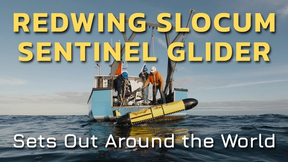Marine Technology Reporter Blogs - kursk
Russian Navy’s Saturation Diving Rescue System

After the Kursk exploded and sank in 2000, the Russian Admiralty recognized that they did not have an efficient system for rescuing stranded submariners. Some western submarine specialists went as far as claiming that such a system did not exist because the Russian Navy cared more about saving face than saving any crews that were eventually stranded. It is quite probable that such a system was not developed earlier due to the dire financial situation faced by Russia. The fact is that it has been 13 years since the Kursk tragedy, but Russia will now be able to deploy a modern, safe and efficient saturation diving rescue system, through its agreement with Divex, who have built 100 major saturation diving systems since 1974.
Remembering the Kursk Submarine Sinking

On August 12 2000, K-141, a Russian Navy Oscar-II class nuclear-powered cruise missile submarine, known to the world as Kursk, was lost with all hands when it sank in the Barents Sea. Kursk, was a Project 949A (known by its NATO reporting name as Oscar II). It was named after the Russian city Kursk, where the largest tank battle in military history, the Battle of Kursk, took place in 1943 during WWII. One of the first vessels completed after the end of the Soviet Union, it was commissioned into the Russian Navy's Northern Fleet. At 154 m (505.03 ft) long and four stories high, she was the largest attack submarine ever built. The Kursk sortied on an exercise to fire dummy torpedoes at the Kirov-class battle cruiser, Pyotr Velikiy, flag ship of the Northern Fleet.

 August 2025
August 2025



